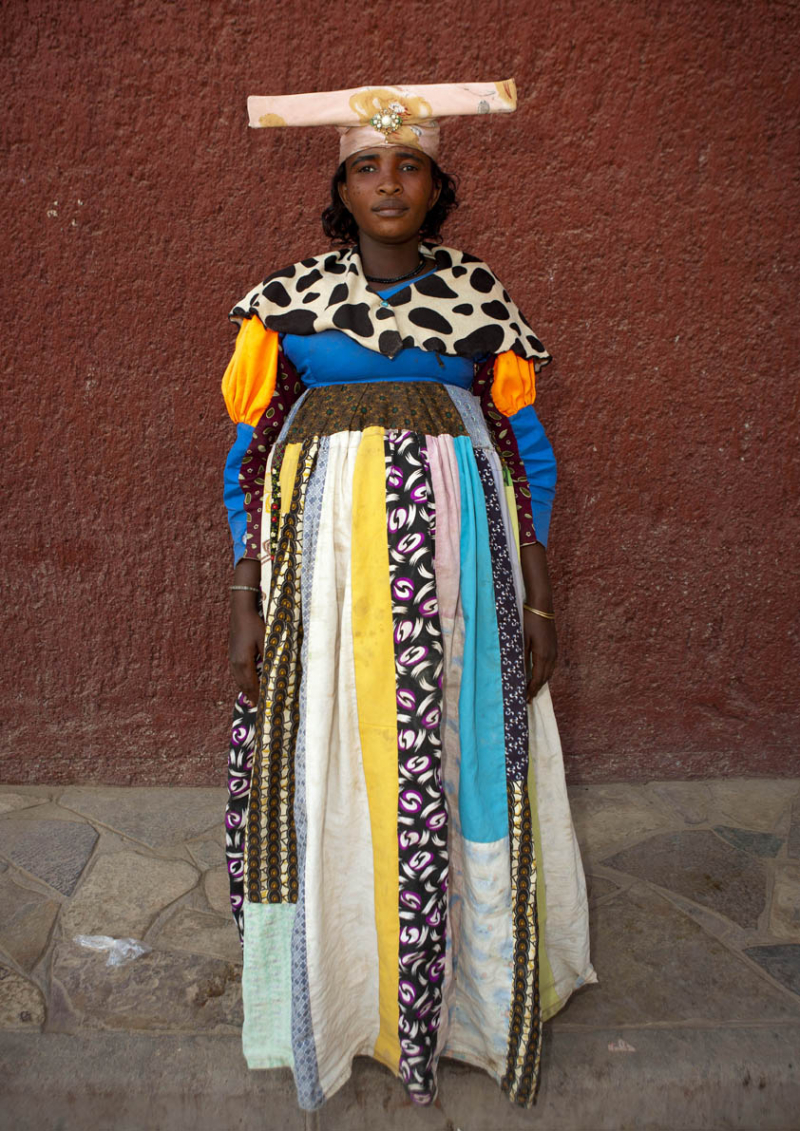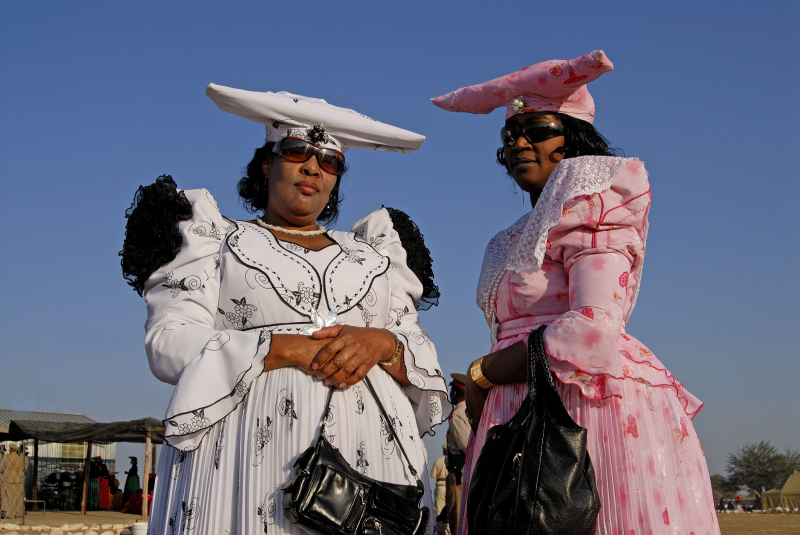Traditional dress
Traditional attire has played and continues to play an important symbolic role in the preservation of Namibia's national values and cultural heritage, as well as the creation of a sense of unity among the country's various tribes. Many traditional clothes have fascinating details and elements that bring Namibian art and talent to life. This is considered as one of the Unique Cultural Characteristics In Namibia.
Because the San are primarily hunter-gatherers, their clothing is made of animal skins and hides. The men dress in antelope skirts and leather coats, with shoulder bags holding everything they need for their journey. The women also wear animal skin skirts and pants, leather coats, and double leather aprons that cover the front and back. Rings and necklaces are also used to adorn their hair, arms, and legs.
The first Nama wore clothing made entirely of animal skin. In the summer, they wore skin robes with fur on the outside, and in the winter, they turned the clothes inside-out to keep warm. Nama women's traditional attire consists of long, formal dresses that resemble Victorian traditional fashion. The long, flowing dresses evolved from the missionaries' style in the 1800s, and this traditional clothing is still an important part of the Nama culture today.
The traditional dress of Namibia's Herero tribe is known as ohorokova, which is a traditional dress adapted from a Victorian-style dress. The ohorokova is worn with a hat that looks like a cow horn, and the dress has a colorful wide skirt with many layers. The men dress in western clothing, which consists of shirts and trousers worn with a coat or suit and a hat. The otjikaiva, a horizontal horned headdress worn to pay homage to the cows that have historically sustained the Herero, is the most distinguishing feature of the Herero women's dress.
Other tribes' traditional costumes include the Damara's traditional dress, which made use of animal hides for clothing, the Ovambo's traditional attire, which is made from a material known as odelela, the Kangvago, and the Himba. Having said that, Namibia is a diverse country where clothing transcends cultures, time, and geography.















